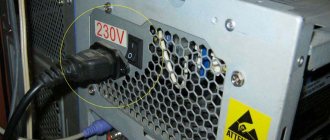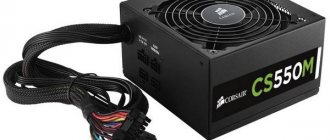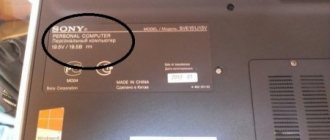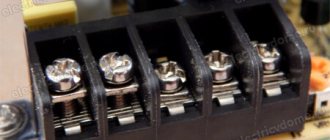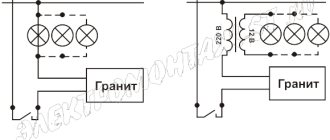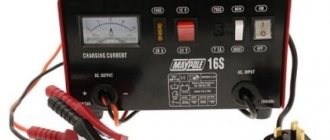How to choose an air conditioner - basic criteria
The selection criteria are few. And at the first stage, you can limit yourself to three: reliability, performance and type (or placement method).
- Reliability. This is a complex characteristic that depends on the quality of components and factory assembly culture, correct installation and the availability of service support. The durability and performance of the device itself can be determined by the reputation of the brand. There are ratings from independent agencies that operate on statistical data, and the positions of manufacturers in these lists approximately coincide. But no matter how reliable the air conditioner is, it must be installed and maintained by certified performers.
- Performance. Most modern apartment air conditioners have two functions. The main one is air cooling. Additional - heating as an air-to-air heat pump. When choosing by power, first of all, the capabilities for the main purpose are calculated. And the calculation of “cold productivity” is more complicated than that of heating devices “heat productivity”. Here, in addition to the volume of the room, additional parameters must be taken into account - the number of residents, which side of the world the facade faces, the thermal power generated by working household appliances.
- Accommodation. The most popular are split and multi-split systems. To “locally” cool a small room, window or mobile air conditioners, which are classified as monoblock devices, are sometimes used.
Selecting the size of the air conditioner
To determine the size of the air conditioner, you need to think about where the device will be located. In this case, it is necessary to remember the rules for the distance of the system from the ceiling and walls. The equipment must have such dimensions as to fit well into the space allocated for it, without significantly reducing the usable free space and without deteriorating the overall appearance of the room.
It is important to choose an air conditioner that will effectively cool or heat the room. If you install too weak equipment, then it will be of little use. Buying an overly powerful device will be a waste of money.
It is especially important to determine in advance the size of the air conditioner when renovating a room. Today, instead of painting and whitewashing the ceiling, they often install suspended structures. This can greatly affect the height of the room and the parameters of a suitable split system
To find out the optimal size of the air conditioner, you need to determine the service area. It is calculated by multiplying the length of the room by the width.
Manufacturers of split systems mark their products with various letters and numbers that indicate the characteristics of the equipment. For example, "9", "12", "18", "24", "30" indicate the performance level of the device. Its dimensions depend on the cooling power of the air conditioner.
To understand what area the climate control equipment is designed for, you need to multiply the number printed on it by 3. So, if the device is planned to be installed in a room of 21-27 sq.m., then you need to give preference to “seven” or “nine”.
Such a split system has dimensions of 70x50x27 cm. If the room area is 27-36 sq.m., then you need to install an air conditioner, which is marked with the number “12”. Its dimensions are 75x52x29 cm.
In a room with an area of 42-54 sq.m. you should purchase an “eighteenth” air conditioner. Its dimensions are 80x54x30 cm. For large rooms, the area of which reaches 72 sq.m., a device marked “24” is suitable. Its dimensions are as follows: 86x65x32 cm.
How to choose the right air conditioner
Based on the way the compressor is controlled, there are two large classes of air conditioners for apartments - conventional and inverter.
Conventional models operate according to the traditional scheme of automatic control of the operation of the electric motor - turning it on and off based on a signal from a sensor (in this case, a temperature sensor). That is, the compressor motor turns on at full power when the temperature rises above a certain threshold and turns off when the temperature reaches a specified minimum. And the temperature adjustment takes place in stages - depending on the settings, the difference in the threshold temperature values at which the automation is triggered can reach 2-3°C.
It would seem that it makes no difference how the compressor works, because the consumed electricity is still converted into “cold”. But that's not true. The worst mode for an electric motor is starting. It is necessary to overcome the inertia of the “rest” of freon and the rotor under load so that it begins to rotate. This results in a large jump in the starting current, and a significant part of the power at this time is spent on accelerating the compressor.
With inverter air conditioners, the compressor runs all the time, moving refrigerant from the condenser to the evaporator and back. The adjustment occurs by increasing or decreasing the compressor engine speed, smoothly increasing or decreasing the “cooling” power. It is this smoothness of inverter control that optimizes the operation of the air conditioner in terms of energy consumption. You can even find a statement that savings are up to 30%. And it is inverter models that have the highest energy efficiency classes - A++ and A+++.
Other advantages of inverter air conditioners include:
- precise temperature control;
- longer compressor service life (due to reducing the number of “starts”);
- low noise level;
- ability to operate in heating mode at temperatures down to -25°C (for normal ones up to -5°C).
The only drawback of inverter models is the high price. But even they have premium samples with additional options:
- fine filtration system, air disinfection;
- additional energy saving modes (motion sensors, “no one is home” mode);
- possibility of remote control from a mobile phone or remote computer;
- work in the “smart home” system.
Inverter air conditioner
Split systems
Air conditioners of this design are the most popular, as can easily be seen by looking at the facade of any building. More than likely, you will see many external units that power split systems.
Split system (English split - “to separate”) is an air conditioner, an air conditioning system (ACS), consisting of two blocks: an external (compressor-condensing unit) and an internal (evaporative) unit. The external unit is mounted outside the air-conditioned room. The indoor unit is installed inside an air-conditioned room or in the ventilation system of a building. The blocks are connected to each other by heat-insulated copper pipes.
Such a system has many advantages. The indoor unit is small in size, and the power allows you to work effectively in rooms of different sizes.
There are also disadvantages due to design features. The first drawback is installation. It can be quite complicated if the indoor and outdoor units are far apart. The second drawback is the need to protect the external unit if it is located at human height. Unfortunately, banal vandalism cannot be ruled out.
However, these are secondary issues that can be easily resolved by professionals. Moreover, the advantages outweigh the disadvantages. And so we will now tell you what to look for when choosing an air conditioner of this particular type.
Main parameters characterizing a split system
- Availability of external and internal blocks;
- Installation method of the indoor unit;
- Power;
- Noise level;
- Compressor type (inverter, non-inverter);
- Additional options;
- Possibility to place the indoor unit in a convenient location.
Installation methods for the indoor unit
- wall;
- floor;
- built-in;
- ceiling (cassette, duct);
- floor-ceiling (universal).
The most optimal and common is a wall-mounted unit.
Wall split system
It beats the floor-mounted one based on two factors. Firstly, restrictions on the placement of furniture in the interior. It goes without saying that you cannot cover the floor unit with a sofa, otherwise the efficiency of the air conditioner will tend to zero. The second factor concerns families with small children. When a source of cool air is within reach of a child, this is not very good.
Cassette split system
A built-in unit, also known as a cassette type unit, has a wall-mounted unit that benefits from fastening. The cassette block is suitable only for interiors with suspended or suspended ceilings. And it is better if the air conditioner is installed first, and then the ceiling.
Since the wall unit is mounted under the ceiling, is not demanding on interior parameters and is out of reach of children, its advantages are obvious.
Split system power
It must be sufficient to ensure that the equipment can effectively cool the entire room in which it is installed. Manufacturers are required to indicate the power of a particular model. Manufacturers indicate the area for which the air conditioner is designed; this information is displayed in the marking of split systems.
The system of measures in air conditioners is usually American. In this case, 1BTU = 0.2931W, or 1W = 3.412BTU. Convert the power received in Watts to BTU to get the required value.
| Air conditioner marking | Air conditioner power | Average room area, m2 | ||
| BTU | kW | |||
| 20 | 7 | 7 000 | 2,1 | 20 |
| 25 | 9 | 9 000 | 2,6 | 25 |
| 35 | 12 | 12 000 | 3,5 | 35 |
| 50 | 18 | 18 000 | 5,3 | 50 |
| 71 | 24 | 24 000 | 7 | 70 |
| 80 | 28 | 28 000 | 8,2 | 80 |
| 100 | 36 | 36 000 | 10,6 | 110 |
| 125 | 42 | 42 000 | 12,3 | 125 |
| 140 | 48 | 48 000 | 14 | 140 |
Split system noise level
Both units are a source of noise, but the noise level of the external one exceeds the noise level of the internal one. Be sure to pay attention to this parameter of each block.
Indoor unit noise level
Regarding the internal, everything is simple so that you do not experience discomfort. Regarding the outside, so that your neighbors do not experience discomfort. Yes, you can wave your hand and not pay attention to it.
Sanitary rules and regulations establish the permissible noise level at 34 dB. But 28-30 dB can already cause discomfort.
We would also like to emphasize that the manufacturer does not always indicate the maximum permissible noise level, limiting itself to a minimum threshold. But this information can be obtained by contacting technical support. We recommend choosing air conditioners with a noise level of about 21 dB.
Split system engine type
Since the engine can be inverter or non-inverter, before purchasing you will have to answer the question: do you need an inverter air conditioner?
Not inverter
A conventional engine works according to the following principle:
- the air is cooled to a predetermined level;
- the equipment turns off;
- the air is heated to a certain point;
- the equipment turns on.
And so - cyclically, i.e. The compressor turns on and off periodically.
Inverter
While the inverter, working almost without turning off, keeps the temperature at approximately the same level, preventing such rapid fluctuations. In addition, it consumes less electrical energy.
The main advantages of inverter air conditioners:
- Significant savings in energy costs
- Quick access to temperature conditions
- The absence of inrush currents reduces the load on the network
- Higher system reliability – longer service life
- Less noisy compressor operation
- Stable maintenance of system operating parameters
- Reduced overall dimensions and weight
But it has one disadvantage compared to a conventional engine - the price. The price may differ for air conditioners of the same series and the same power by up to 25-30%.
Heating function in split systems
It is available in almost all models of split systems, inverter and non-inverter. If air conditioners are used in winter (for heat) and in summer (for cooling), we recommend split systems with an inverter motor (inverter), they are more energy efficient, and energy savings will be significant up to 25%.
Additional functions of split systems
A modern air conditioner can perform not only heating or cooling tasks, but also many others. And that's great! There is just one nuance: every additional function is an addition to the price. Therefore, you need to look not only at the availability of additional features, but also think about whether you need them. The most popular options for modern air conditioners are:
- air cleaning;
- with air ionization;
- drainage;
- control via Wifi;
- ventilation;
- influx of fresh air from the street.
Which air conditioner to choose for an apartment - types
An air conditioner for an apartment is usually chosen from household or semi-industrial types.
Household types include wall-mounted split systems, window and mobile air conditioners.
Semi-industrial types include cassette, floor-ceiling and duct split systems. Column air conditioners also fall into this category, but they are not installed in apartments.
Wall-mounted air conditioners
Already from the name itself it is clear that this is a split system, in which the internal unit is hung on the wall.
One room, one room
A household split system with one internal wall unit is ideal for serving one room. And if we talk about an apartment, then the only option is a studio. But we must take into account the presence of a kitchen work area and the presence of characteristic odors, which even the hood does not prevent from spreading. Therefore, in order not to turn off the air conditioner while cooking, you need to choose a model with an effective air purification filter. For example, a photocatalytic filter with a streamer discharge source not only cleans, but also partially disinfects the air by “burning” microparticles of dust of organic origin.
And of course, for a studio with a kitchen, the supply of fresh air is especially important. But here you have to choose - either install a cheaper model and ventilate the room more often (turning off the air conditioner during this time), or choose a model with a mixture of fresh air, but it will cost more.
Studio apartment
The one-room apartment has a dedicated kitchen. If it is equipped with a gas appliance (stove, oven, water heater), then according to the standards it must be separated from the living room by a door (or a corridor with a door). There are two options for using a wall-mounted air conditioner for a one-room apartment:
- Install a multi-split system with two indoor units. This is the optimal solution if the kitchen is large enough (more than 10-12 m2) and it is separated from the room by a corridor.
- Install a wall-mounted air conditioner with one indoor unit. But this will give a noticeable effect if the kitchen is adjacent to the room and has a common interior door with it. In this case, the indoor unit is hung on the same wall where the doorway is located, and the flow of cooled air is directed so that it is reflected from the opposite wall. When choosing a model based on performance, you must take into account that part of the power (up to 30%) will be spent on cooling the kitchen.
Two-roomed flat
Purely in terms of the numerical characteristics, the power of a household air conditioner with one wall-mounted unit may be enough to cool the entire volume of a standard two-room apartment. There are samples with a power of 10 kW, and taking into account the characteristics of a city apartment with the usual set of household appliances and electronics, this is enough for an area of 80 m2.
But given the presence of three interior partitions, doors and a corridor, one indoor unit is not enough. If you install an air conditioner in the bedroom, you will have to “freeze” it to create a comfortable temperature in the living room. Not to mention the kitchen.
You can place the indoor unit in the hallway (hall), if doors lead from here to all other rooms. But even here it is necessary to create a fairly low temperature, and the air conditioner will work at the limit of its capabilities.
There are two options:
- Install a multi-split system with three or two indoor units (one common for the kitchen and adjacent room if there is a common door).
- Install two systems. One of them with one block. And the second - with one or two blocks.
Three bedroom apartment
The peculiarity of an apartment with three rooms is that it usually cannot be cooled with one multi-split system. And it’s not even a matter of power - a standard three-room apartment, built in the 80-90s, has an area of no more than 80 m2, which is quite acceptable from the point of view of the performance of one outdoor unit. There are also restrictions for the compressor on the length of the pipes through which freon circulates. Usually one of the rooms faces the opposite side of the house, and taking into account the complex route of laying the freon pipe, its length will be longer than specified by the manufacturer.
For a three-room apartment you already need two split or multi-split systems. Although a situation may arise that, due to the peculiarities of the layout, a split system will be needed for a small room. And this is not always economically profitable. And for such cases there are floor-mounted mobile or window air conditioners.
Floor-mounted mobile air conditioners
There are two types of floor air conditioners - stationary and mobile. But if stationary models belong to split systems with external units, then a mobile air conditioner is a monoblock device.
The term “portable” means that it is not attached to any load-bearing surface, and is put away in the pantry during the cold season. And if necessary, you can move the air conditioner from room to room or transport it to another facility (for example, to a country house). But in working condition, its movement is limited by the length of the corrugated pipe to remove warm air from the condenser grille to the street.
The advantages of such a monoblock are obvious, but there are also disadvantages. The main thing is a fairly high noise level compared to a split system. The only noise of the indoor unit is the fan and the air flow passing through the grilles. In a mobile air conditioner, a compressor is added to these sources, and the fan has more power. Therefore, for those who are sensitive sleepers, this type is not suitable for the bedroom.
Despite the mobility of the device, it has certain restrictions on the installation location:
- for permanent placement in an external wall, in a window or in a balcony door, you must install a special adapter for connecting the pipe;
- when temporarily placed, a special flat adapter is put on the pipe, which is led out into a slightly open window or balcony door (although the efficiency of air conditioning in this case is reduced).
And of course, the temporary location of the air conditioner must be chosen taking into account the length of the power cord and the distance to the nearest outlet.
Window air conditioners
Not long ago this type was the only one we had for domestic use. Nowadays it is rarely used. There are several reasons:
- higher noise level than split systems;
- to place the air conditioner, it is necessary to use part of the window opening, which reduces the level of insolation in the room;
- low power, which limits the scope of application to small rooms.
But window air conditioners also have advantages compared to split systems:
- any of them is the smallest air conditioner in terms of installation dimensions;
- in terms of design, these are the simplest air conditioners with the lowest cost;
- they can be easily dismantled and transported to a new location.
Classification of air conditioners
Household air coolers differ in many respects - design, method of operation and installation, availability of additional functions. The type and principle of operation are the first things you should pay attention to when choosing an air conditioner. The following types of air conditioners for apartments are distinguished:
- Monoblock air conditioners - window and mobile installations.
- Climate systems with two blocks.
Monoblock models are the most budget-friendly and simplest type of air conditioner. In such devices, all elements are located in a single housing. The flow of air into the heat exchanger is organized by leading the channel out of the window (mobile models), or by installing the unit in the window opening. Today, monoblocks are not very popular among buyers, since they are difficult to install in modern double-glazed windows, they have insufficient performance and a high noise level.
By the term “air conditioner” in an apartment, we most often mean a split system - a two-unit device in which the external and internal parts are connected via a channel in the wall of the house. Cooling and heating occurs when air masses pass through a block with freon tubes. At the same time, all the main structural elements are located in the external, street block, and the internal part is occupied by a filtration and heat exchange system.
Split systems have many additional functions, automatic control and fit perfectly into the design of any room. Split systems also include inverter air conditioners - the best models for climate control in an apartment. In the following sections, we will look at the capabilities of apartment air conditioners and list the factors that you should pay attention to when purchasing them.
Which air conditioner to choose - brands
If we talk about manufacturer ratings, they are usually divided into three or four groups.
The first includes the elite, but it is not numerous - in all lists there are no more than four companies. Daikin and Mitsubishi Electric are always present among them. This also includes Fujitsu, but it is rare for our market. The reliability of air conditioners in this group does not depend on the country where the assembly took place. The cost of the products of these brands is, of course, higher, but the company’s catalog presents a fairly wide range of models, among which there are samples at an affordable price. For example, air conditioners with a traditional scheme for regulating operating modes and a standard set of options.
The second group is high-reliability air conditioners. There is a wider list of companies, but they are also quite well-known, and only their position changes among different rating agencies. Among the most popular manufacturers of air conditioners here are necessarily Toshiba, Mitsubishi Heavy, Samsung, LG, Haier, Electrolux, Gree.
The third group is mid-range air conditioners. Such brands include Dantex, McQuay and Midea, which is popular in our market.
How to calculate the power of air conditioners
When ordering an air conditioner, specialists from most certified companies will select the air conditioner model for your apartment based on area, number of rooms and their relative position. At the same time, they will take into account other factors affecting the temperature inside each room.
When ordering an air conditioner in online stores, the same service will be provided online or they will offer to calculate the required power using the “built-in” calculator on the website. But you can also estimate the required power of the air conditioner per room. For a room facing north, use a ratio of 1 kW of power in cooling mode per 10 m2 (with a ceiling height of up to three meters). This figure must be multiplied by a correction factor of 1.2 if the room is located on the south side of the house. To the resulting value we must add the power of household appliances and electronics (where there are no moving parts, electrical energy is mostly converted into heat). The heat generated by one person is also taken into account. For an adult it is 120-130 W.
Air conditioner power calculation
Example for a room of 20 square meters. m
We will show the calculation of power for air conditioning a small apartment - a studio with an area of 20 m² with a ceiling height of 2.7 m. Other initial data:
- illumination – average;
- number of residents – 2;
- plasma TV panel – 1 pc.;
- computer – 1 pc.;
- refrigerator electricity consumption – 200 W;
- air exchange rate excluding periodically operating kitchen hood – 1.
Heat emissions from residents are 2 x 0.1 = 0.2 kW, from household appliances, taking into account simultaneity - 0.3 + 0.2 = 0.5 kW, from the refrigerator - 200 x 30% = 60 W = 0.06 kW. Room with average illumination, specific characteristic q = 35 W/m³. We calculate the heat flow from the walls:
Qtp = 20 x 2.7 x 35 / 1000 = 1.89 kW.
The final calculation of the air conditioner power looks like this:
Q = 1.89 + 0.2 + 0.56 = 2.65 kW, plus cold flow for ventilation 2.65 x 1.16 = 3.08 kW.
The movement of air flows around the house during ventilation
Important! Do not confuse general ventilation with home ventilation. The air flow coming through open windows is too large and changes with gusts of wind. A cooler should not and cannot properly condition a room into which an uncontrolled volume of outside air flows freely.
How to choose the ideal location for the indoor unit
There are general recommendations for placing the indoor unit, regardless of the purpose of the room:
- the flow of cold air should not directly hit a person;
- it is necessary to ensure the minimum possible length of freon pipeline routes;
- the location of grilles or diffusers should facilitate uniform cooling;
- the unit should not be placed in niches or places where it may be blocked (for example, by a curtain);
- the distance from the grid to the nearest surface along the horizon must be at least 70 cm;
- the wall block must hang below the floor slab or ceiling beam by at least 10 cm.
In addition, there are separate recommendations for choosing and placing an air conditioner depending on the purpose of the living room. An example would be a two-room apartment.
Air conditioner selection parameters
Air conditioning is not a cheap piece of equipment, and even after installation, it will be difficult to dismantle and replace an unsuitable model. Therefore, when choosing, you need to immediately take into account all the nuances - you have no room for error.
Installation location
There will be no strict recommendations on this point, since the choice of a specific model depends on the layout of the room and the possibilities of placing one or another climate control equipment.
It is clear that if you do not have a hypermarket with a powerful ventilation system, there will simply be nowhere to install a ducted air conditioner. But other household and similar models will tell you which installation method is right for you:
1. If you are going to order new windows and want to save on air conditioning, take a cheap window unit and ask the measurers to calculate the frame, taking into account its installation in the opening.
2. If you want to take the air conditioner with you to the dacha or simply move it from room to room, look for a mobile floor-mounted option.
3. Are you planning to renovate your apartment? Now is the time to install a two-unit wall-mounted or floor-mounted air conditioner - then carefully seal the hole in the wall.
4. If your project includes suspended ceilings, you can hide the cassette unit behind them.
5. For a country house or a large multi-room apartment, it is better to install a split system with wiring throughout all living areas.
Power
You should not choose it according to the principle “the more, the better.” Of course, it is easier to adjust the operation of a powerful air conditioner to suit your needs, which is almost impossible in the case of a weak device. However, making an excess supply is not financially profitable - your air conditioner simply will not work out the money spent on it.
Calculate the required power of climate control equipment, taking into account the main factors:
1. Room area - for every 10 m2 with a standard ceiling height of 2.5–2.7 m, 1000 W of electricity is required.
2. Orientation to the cardinal points - if the windows face East or South, 20% must be added to the calculated power.
3. The number of people living in the room - in excess of the norm, each person needs another 100 W.
Noise performance
The volume of the air conditioner is an important parameter, especially if it is installed in the bedroom. This, in turn, depends on the power and design of the unit (monoblocks are noisier). Unfortunately, there are no completely quiet models, but you can always purchase a two-block version with maximum sound insulation.
The average noise performance of air conditioners ranges from 24–35 dB, but most modern models already have a “night mode”, in which the sound level is reduced to a comfortable 17 dB.
Additional functions
Good, expensive air conditioners can not only cool an apartment in the summer, but also heat it in the autumn or even in winter.
Modern climate control equipment may have the following additional functions:
1. Inversion – reduction of operating noise (and at the same time power consumption) due to a smooth change in compressor power. Increases the cost of the device, but increases its energy efficiency.
2. Sleep Mode – slowly decreases the temperature in the room, followed by the fan switching to the quietest mode.
3. Turbo – short-term start at maximum power (up to 20% of the nominal) to quickly cool the rooms.
4. I Feel – setting the thermostat to measure the temperature in the remote control area, that is, next to the owner.
5. Defrosting the external unit and “hot start” are relevant functions for air conditioners with heating mode.
6. Dehumidifying or humidifying the air in the room.
What is the best way to install air conditioning in a two-room apartment?
The standard situation is the living room and bedroom.
For the living room, the main condition is that the air flow does not fall on the seating area and dining table.
For the bedroom, this condition applies to the bed. If the room is small, then a wall-mounted air conditioner is hung above the headboard and directs the flow to the opposite wall. A second area in the bedroom that needs to be protected from direct exposure may be a home office workstation or a woman's dressing table.
If a child lives in a two-room apartment, then both rooms can be equated to a bedroom. And in this case, the general principle applies - cold air from the indoor unit should not fall on the bed, sofa, workplace or play area.
Important Tips
When installing, be sure to take into account the following rules:
- Availability of fresh air. It is impossible to install the external unit in a confined space without air access and or with limited air flow (glazed loggia). Such an error will lead to overheating and damage to the control unit.
- During operation, the refrigerant will have to be changed periodically. To do this, the valves must be positioned so that the technician can replace them freely and without risk. For most models, the valve is located on the left side.
- It is necessary to provide proper drainage of condensate so that it does not fall on the walls, canopy or sidewalk.
- The fastenings must be mounted on supporting structures, which must be designed for a load of several tens of kilograms. The brackets cannot be fixed to walls made of aerated concrete, to the external decorative cladding layer or to the insulation layer.
- The distance from the wall to the unit should be at least 10 cm. This distance will ensure ventilation and reduce the risk of overheating of the device. The distance from the wall to the inner wall of the unit should not be too large. The hidden wall of the block should not be exposed to direct sunlight.
- When laying connecting lines, you should avoid a large number of bends, as they will lead to a decrease in the required intensity of refrigerant movement, which will reduce the efficiency of the air conditioner.
- It is recommended to equip a cornice that will protect the external unit of the air conditioner from direct moisture.
Installation to the wall is carried out using special brackets, which are usually included in the package. It has the form of a profile of various sections, bent at an angle of 90 degrees. It has several holes: some for fixing to the wall, others for mounting the block. The bearing capacity of the brackets exceeds the weight of the air conditioner several times, so their use will ensure safety and reliability.
Features of using the air conditioner
There are general rules for using air conditioning in the hot season:
- The optimal air temperature for the room is 23-24°
- If you often have to leave and come back from the refrigerated room, then the optimal temperature difference should be no more than 7°
- In extreme heat, it is not recommended to immediately turn on the air conditioner to maximum cooling. This should be done in several stages, gradually lowering the temperature.
- If air is not provided, the room should be ventilated every 4 hours.
And the main condition for long-term work is pre-season preparation:
- cleaning the outdoor unit;
- cleaning filters and drainage tank of the indoor unit;
- diagnostics and routine maintenance of the air conditioner.



